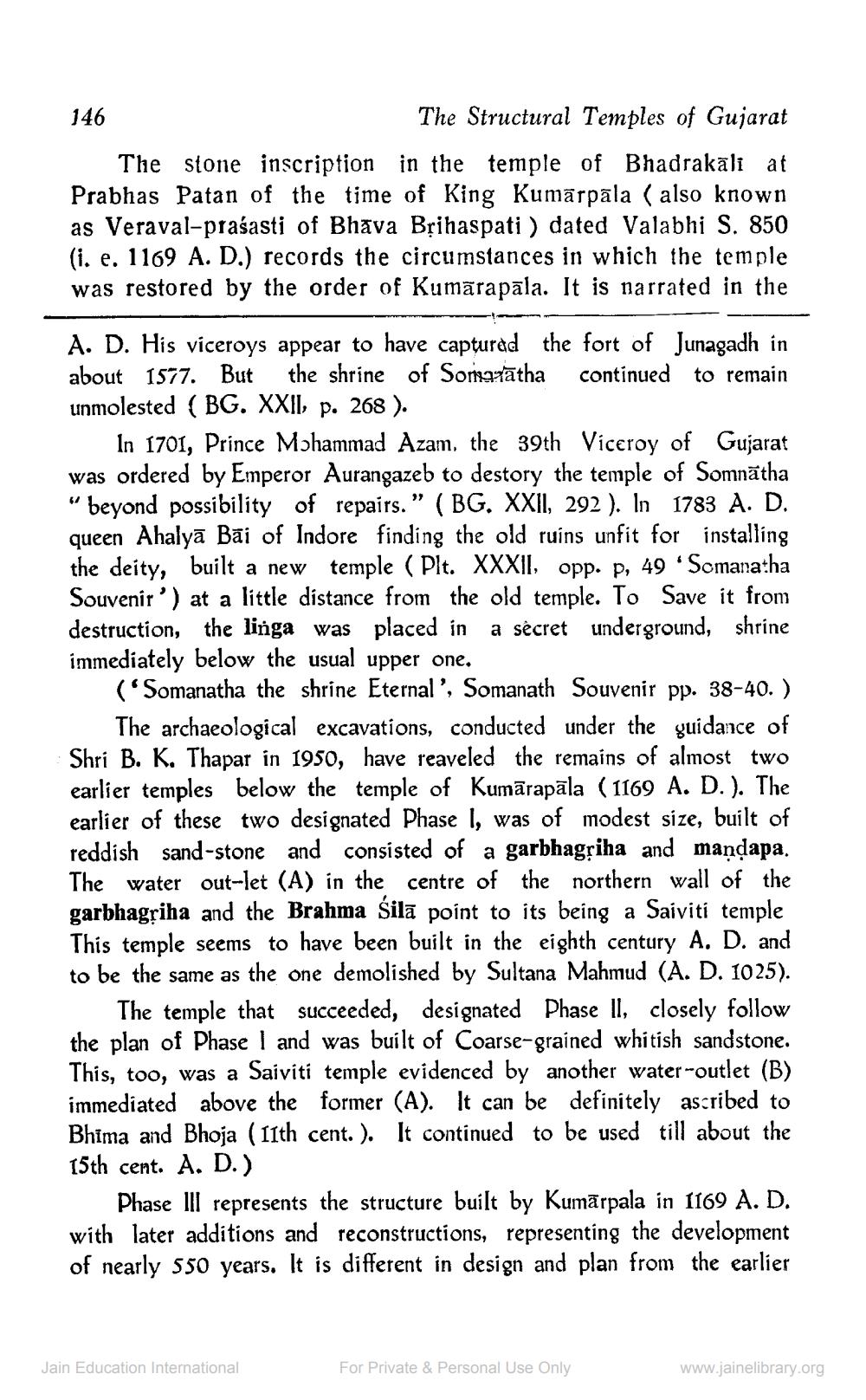________________
The Structural Temples of Gujarat
The stone inscription in the temple of Bhadrakali at Prabhas Patan of the time of King Kumārpāla (also known as Veraval-prasasti of Bhava Brihaspati ) dated Valabhi S. 850 (i. e. 1169 A. D.) records the circumstances in which the temple was restored by the order of Kumarapala. It is narrated in the
146
A. D. His viceroys appear to have captured the fort of Junagadh in about 1577. But the shrine of Somaratha continued to remain
unmolested (BG. XXII, p. 268 ).
"
In 1701, Prince Mohammad Azam, the 39th Viceroy of Gujarat was ordered by Emperor Aurangazeb to destory the temple of Somnatha 'beyond possibility of repairs." (BG. XXII, 292). In 1783 A. D. queen Ahalya Bai of Indore finding the old ruins unfit for installing the deity, built a new temple (Plt. XXXII, opp. p, 49 'Somanatha Souvenir') at a little distance from the old temple. To Save it from destruction, the linga was placed in a secret underground, shrine immediately below the usual upper one.
('Somanatha the shrine Eternal', Somanath Souvenir pp. 38-40.)
The archaeological excavations, conducted under the guidance of Shri B. K. Thapar in 1950, have reaveled the remains of almost two earlier temples below the temple of Kumarapala (1169 A. D.). The earlier of these two designated Phase I, was of modest size, built of reddish sand-stone and consisted of a garbhagriha and mandapa. The water out-let (A) in the centre of the northern wall of the garbhagriha and the Brahma Śila point to its being a Saiviti temple This temple seems to have been built in the eighth century A. D. and to be the same as the one demolished by Sultana Mahmud (A. D. 1025).
The temple that succeeded, designated Phase II, closely follow the plan of Phase I and was built of Coarse-grained whitish sandstone. This, too, was a Saiviti temple evidenced by another water-outlet (B) immediated above the former (A). It can be definitely ascribed to Bhima and Bhoja (11th cent.). It continued to be used till about the 15th cent. A. D.)
Phase III represents the structure built by Kumarpala in 1169 A. D. with later additions and reconstructions, representing the development of nearly 550 years. It is different in design and plan from the earlier
Jain Education International
For Private & Personal Use Only
www.jainelibrary.org




